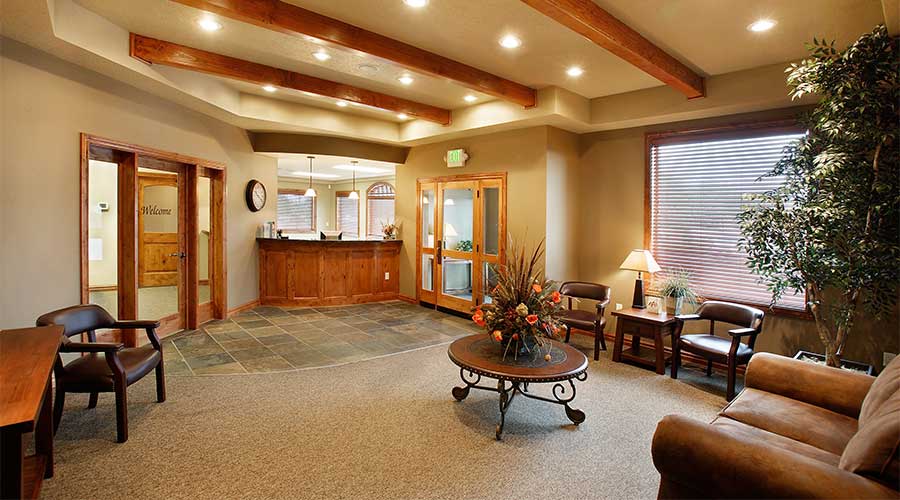More than ever, today’s consumers are taking responsibility for managing their healthcare. Healthcare systems have responded by taking steps to improve the overall patient experience, from clinical innovations and electronic healthcare records to a shift in healthcare delivery through the availability of outpatient treatment facilities, surgical and urgent care centers and primary care clinics.
But the issue is not just about the delivery of care. It is also about the healthcare settings. Consumers are willing to shop around for their healthcare needs and are not hesitant to rate what is good and what is not about their healthcare experiences, which can impact healthcare systems’ future funding and the ability to attract top-notch professionals.
As a result, systems increasingly are creating environments designed to make patients and their families feel calm, relaxed and comfortable while simultaneously easing the workload and physical strain on clinicians.
Finding balance
The move toward a more soothing look and feel that incorporates hospitality, residential and commercial elements extends to the furniture that healthcare systems will purchase in 2023 and beyond. The challenge for managers is to recognize the need for a balance between design aesthetic and space functionality to create a calming space that matches the high level of care patients expect.
For example, rows of identical chairs in waiting rooms positioned next to and directly across from each other are being replaced by more comfortable lounge furniture that offers flexibility and privacy. This step makes the room more inviting and spacious, and it strikes a balance between encouraging patients waiting or recuperating to relax and enabling them to sit and stand easily and safely.
Waiting rooms also represent the first impression many visitors get of a healthcare setting. Patients who could be receiving important news are already anxious. Rather than providing seating in rows that can provoke anxiety, a more comfortable space with choices of diverse types of seating and spaces for privacy can help patients and those accompanying them feel more relaxed.
Beyond comfort
Furniture options that can make healthcare spaces seem less like an airport terminal and more like a lounge have become increasingly important. But those furniture choices also need to be cleanable and sustainable. As COVID-19 made clear, cleanability does not simply mean removing dirt and stains from furniture. It also means effective infection prevention.
To that end, chairs with crumb sweeps and removable arm caps and cushions prevent bacteria from growing and ensure workers can deep clean seating between uses.
Fabrics have been and will continue to be replaced with vinyls that are anti-microbial and easier to clean. Vinyl options have improved over the last few years, with more interesting patterns, better colorways and textures that look like fabric.
Increased productivity also is leading more healthcare systems to establish respite spaces where caregivers can rest and recharge. These spaces typically are equipped with comfortable furniture – including sofas, reclining chairs and chairs with ottomans or tablet arms – so workers can relax while they take a break.
Modular furniture also can feature integrated power sources that allow users who want a quiet space to charge phones, plug in laptops, review documents and study a challenging case.
Sit-stand workstations offer caregivers another option with ergonomic features. They allow users to change positions and engage muscles more often and increase circulation, which can lead to improved posture and more productivity.
Incorporating nature
Beyond furniture considerations, healthcare systems are integrating biophilic elements into waiting rooms and patient settings. Natural components, including plants, daylight and nature views, are being used to lower stress, promote patient wellness and increase caregiver productivity. Sound-masking solutions and dimmable lighting options also enable users to decrease outside distractions and create a more calming atmosphere.
To continue being responsive to shifting consumer demands, it is essential for healthcare facilities managers to conduct routine audits to resolve warranty issues and ensure products perform as intended. A proactive asset and inventory management program allows managers to store and redeploy assets as necessary, protecting the system’s long-term investment and ensuring the healthcare space continues to work effectively.
Krista Jolly is an account executive at dancker, an interior solutions company that integrates architectural, furniture and technology as a one-source provider and logistics manager for corporate, education, government and healthcare facilities. Jolly has more than 15 years of experience in design, account and project management and has managed contract furniture projects for corporate and healthcare clients.

 Rethinking Strategies for Construction Success
Rethinking Strategies for Construction Success From Touchless to Total Performance: Healthcare Restroom Design Redefined
From Touchless to Total Performance: Healthcare Restroom Design Redefined New York State Approves $53M Construction Program at Niagara Falls Memorial Medical Center
New York State Approves $53M Construction Program at Niagara Falls Memorial Medical Center How Health Systems Are Rethinking Facilities Amid Margin Pressure
How Health Systems Are Rethinking Facilities Amid Margin Pressure Ground Broken on New Medical Office Building in Scottsdale, AZ
Ground Broken on New Medical Office Building in Scottsdale, AZ